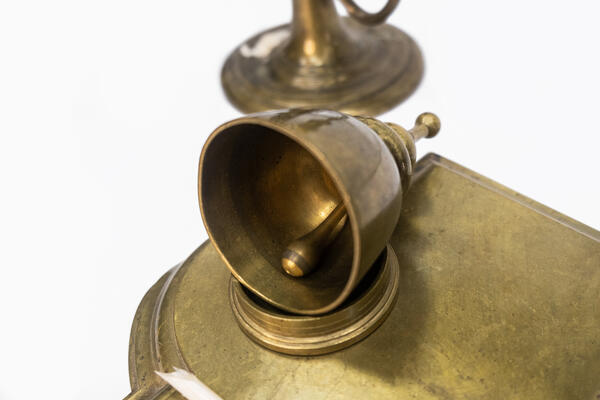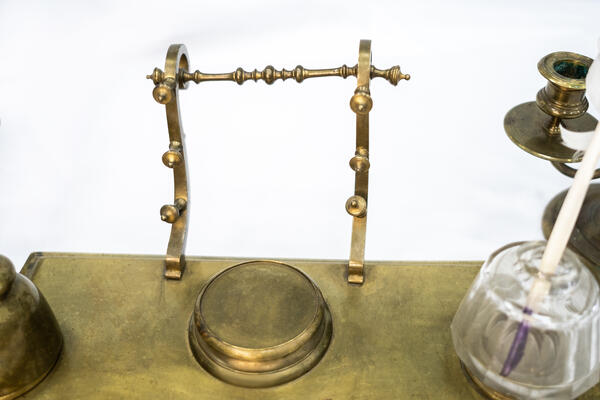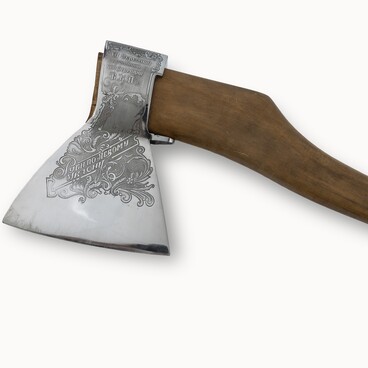The Russian metallurgist Pavel Petrovich Anosov contributed greatly to the formation and development of the Zlatoust arms production. Born in Tver, the scientist found a second home in Zlatoust.
Between 1817 and 1847, after graduating from the Mining Cadet Corps in Saint Petersburg, Anosov resided and worked in the Zlatoust Mining District. There he established himself as an outstanding metallurgist, geologist, designer, and technologist. Anosov introduced metallurgical innovations and came up with important scientific discoveries.
Anosov’s scientific works were published in the “Gorny Zhurnal” (Mining Journal), founded in 1825. Pavel Anosov was invited to work as a correspondent for this journal. He conducted a lot of research, discovered the process of gas carburizing of iron during steelmaking, developed a method for direct conversion of ore into steel, used a microscope to study the structure of steel, and laid the foundation for metallography studies.
His main discovery was the reconstruction of the technology for producing cast Damascus steel. Anosov included the results of his achievements in the essay “On Damascus Steel”, which was published in Saint Petersburg by the printing house of Ilya Ivanovich Glazunov in 1841.
In 1847, Pavel Petrovich Anosov was appointed head of the Altai mining factories and governor of Tomsk, so he had to leave the Zlatoust Mining District. His new career did not last long, as he died in 1851. According to legend, the artisans of the plant created a bronze writing set as a gift for Pavel Anosov, which rested on the table in his office for many years.
The great metallurgist used the writing instruments from this set to write many of his scientific works. All the elements of the writing set were designed in the same style. The craftsmen created a figured stand and, in the middle of it, they placed an elegant holder for pens and papers and a small container for sand, which was used to dry writings in ink. The set also includes a glass inkwell and a servant bell.
The craftsmen completed the writing set with two elegant, chiseled candlesticks, each with two twisted candleholders. In the 1950s, the descendants of the great Russian metallurgist donated the writing set to the Zlatoust Museum.
Between 1817 and 1847, after graduating from the Mining Cadet Corps in Saint Petersburg, Anosov resided and worked in the Zlatoust Mining District. There he established himself as an outstanding metallurgist, geologist, designer, and technologist. Anosov introduced metallurgical innovations and came up with important scientific discoveries.
Anosov’s scientific works were published in the “Gorny Zhurnal” (Mining Journal), founded in 1825. Pavel Anosov was invited to work as a correspondent for this journal. He conducted a lot of research, discovered the process of gas carburizing of iron during steelmaking, developed a method for direct conversion of ore into steel, used a microscope to study the structure of steel, and laid the foundation for metallography studies.
His main discovery was the reconstruction of the technology for producing cast Damascus steel. Anosov included the results of his achievements in the essay “On Damascus Steel”, which was published in Saint Petersburg by the printing house of Ilya Ivanovich Glazunov in 1841.
In 1847, Pavel Petrovich Anosov was appointed head of the Altai mining factories and governor of Tomsk, so he had to leave the Zlatoust Mining District. His new career did not last long, as he died in 1851. According to legend, the artisans of the plant created a bronze writing set as a gift for Pavel Anosov, which rested on the table in his office for many years.
The great metallurgist used the writing instruments from this set to write many of his scientific works. All the elements of the writing set were designed in the same style. The craftsmen created a figured stand and, in the middle of it, they placed an elegant holder for pens and papers and a small container for sand, which was used to dry writings in ink. The set also includes a glass inkwell and a servant bell.
The craftsmen completed the writing set with two elegant, chiseled candlesticks, each with two twisted candleholders. In the 1950s, the descendants of the great Russian metallurgist donated the writing set to the Zlatoust Museum.




